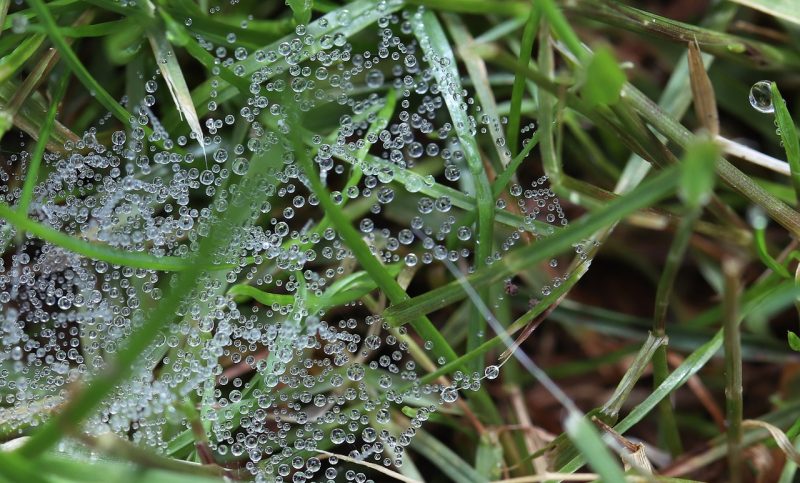Learning how to fertilize through a drip irrigation system is quite simple, but it involves understanding what fertilizer to use and incorporating it in the injector. This process is also called fertigation and offers many benefits for different production systems. More so, fertilizing itself would be more comfortable through irrigation water, given that you understand how a drip irrigation system works.
With proper knowledge in fertigation, you can take advantage of faster water and nutrient uptake. You can also be more efficient in using water and fertilizers. If you’re using a greenhouse instead of an outdoor garden, you may also find fertigation more beneficial for your plant management.

How To Fertilize Through A Drip Irrigation System Correctly
Step #1. Know what fertilizer to use
As one can assume, the proper fertilizer for a drip irrigation system is water-soluble. You will then incorporate a fertilizer injector into the drip irrigation system, which will then disperse the fertilizer for you. This way, you can control both the watering and fertilizing in one system.
How to avoid clogging
However, do note that you want to avoid clogging the drip emitters with the water-soluble fertilizer. To do this, filter the downstream of the fertilizing unit and use a product that mixes well with water. Remember that a poorly dissolved solution will clog the emitters because the particles will stay in suspension.
Some other common fertilizer mistakes to avoid are combining chemicals and fertilizers. This can cause residues, which will eventually plug the emitters of the system. You also want to dilute the fertilizer concentration that would suffice one irrigation cycle.
How to avoid backflow
More so, add something upward to the unit’s stream because a common problem with fertigation is when the fertilizer backflows into the water source. Ensure that you check your device to avoid any issues. Some areas also have laws about the placement of a backflow prevention device.
Step #2. Incorporate fertilizer into the drip irrigation system
The next step is incorporating the fertilizer into the drip irrigation system. You want to check the emitter at a great distance from the pump so that it’s at full pressure. This way, you won’t face problems with the injection from a poorly pressurized drip irrigation system.
Backflow prevention device and filters
As mentioned earlier, you want to guarantee that no particles will clog the emitters, and you may need to add a backflow prevention device. For the filter itself, consider your injector type and water source to choose the appropriate one and place it between the injector and water source. Another filter is also necessary between the laterals and the injector to keep particles from potentially clogging the emitters.
How to ensure equal fertilization and prevent clogged drip lines
Once you have all those parts secured, you must allow the system to reach full pressure by injecting the fertilizer. The emphasis is necessary on ensuring that the drip irrigation system is at full pressure because you want each emitter to be in conjunction with each other. This way, you can ensure equal fertilizer distribution throughout the drip irrigation system.
After the injection, clean the irrigation system thoroughly. Failure to flush the nutrients in the system can clog the drip lines.
Common Injectors For Fertilizing Through A Drip Irrigation System
In general, fertilizing through a drip irrigation system is as straightforward as adding fertilizer injectors to the drip head assembly. This makes fertigation an excellent option for commercial growers and even those who are growing in the greenhouse. There are two common types of injectors that you can use for a drip irrigation system.
The first type is an injector that you add to the drip head, which draws the fertilizer for you and injects it into the irrigation system at a concentration. On the other hand, you can also use T and Y filters as injectors and add pellets into them, which will dissolve and enter the system. Both injectors are easy to use as long as you follow the instructions, know your fertilizer, and check their compatibility with your system.
Other Fertilizing Methods For Drip Systems And What Won’t Work
Some growers do not rely on drip irrigation to fertilize. Instead, they place time-release fertilizer under each emitter or side-dress between the emitter and the plant with a soluble fertilizer. The central concept here is to guarantee that the fertilizer will reach the plant roots and get into the emitters’ wet zone.
Therefore, you can’t sprinkle dry fertilizer on the soil surface or use a hose to feed with liquid fertilizer. Using manure and other mulch won’t also work because it is underneath it and won’t create a wet zone to bring the nutrients into the soil.
Conclusion
Fertigation or using a drip irrigation system to fertilize is an excellent way to conserve fertilizer and water and ensure faster uptake of both with your plants. Learning how to fertilize through a drip irrigation system is also something you shouldn’t get intimidated by as long as you understand the two subjects this article has discussed.
First, understand that a water-soluble fertilizer that readily dissolves in water is crucial to prevent clogging in the system. Second, you want to add filters and a backflow prevention device to anticipate common problems with fertigation such as blocking and backflow of fertilizer. And lastly, you must use the system in full pressure to ensure equal fertilizer distribution.

I’m a small holder of two acres and would like to understand more about fertilization and fertigation I have a bore hole and a small pump. We are based in Ghana
‘ thank Awoonor Renner.